
How to Use Adafruit SCD30: Examples, Pinouts, and Specs
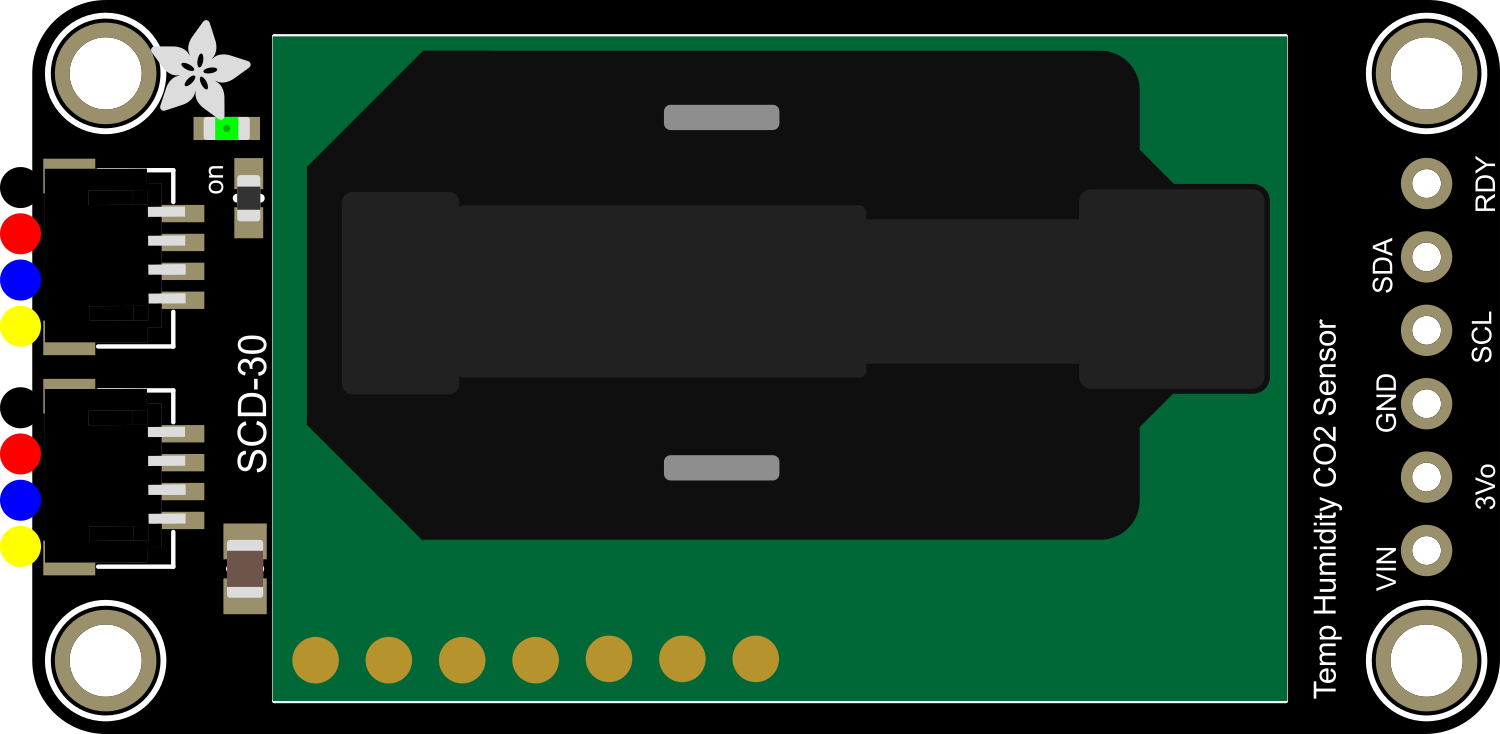
 Design with Adafruit SCD30 in Cirkit Designer
Design with Adafruit SCD30 in Cirkit DesignerIntroduction
The Adafruit SCD30 is a high-precision sensor module capable of measuring carbon dioxide (CO2) concentration, temperature, and humidity in the environment. Based on the Sensirion SCD30 sensor, it is designed for air quality monitoring and HVAC applications. The sensor uses non-dispersive infrared (NDIR) technology for CO2 detection, ensuring reliable and accurate measurements. Common applications include indoor air quality monitoring, environmental sensing, and demand-controlled ventilation systems.
Explore Projects Built with Adafruit SCD30
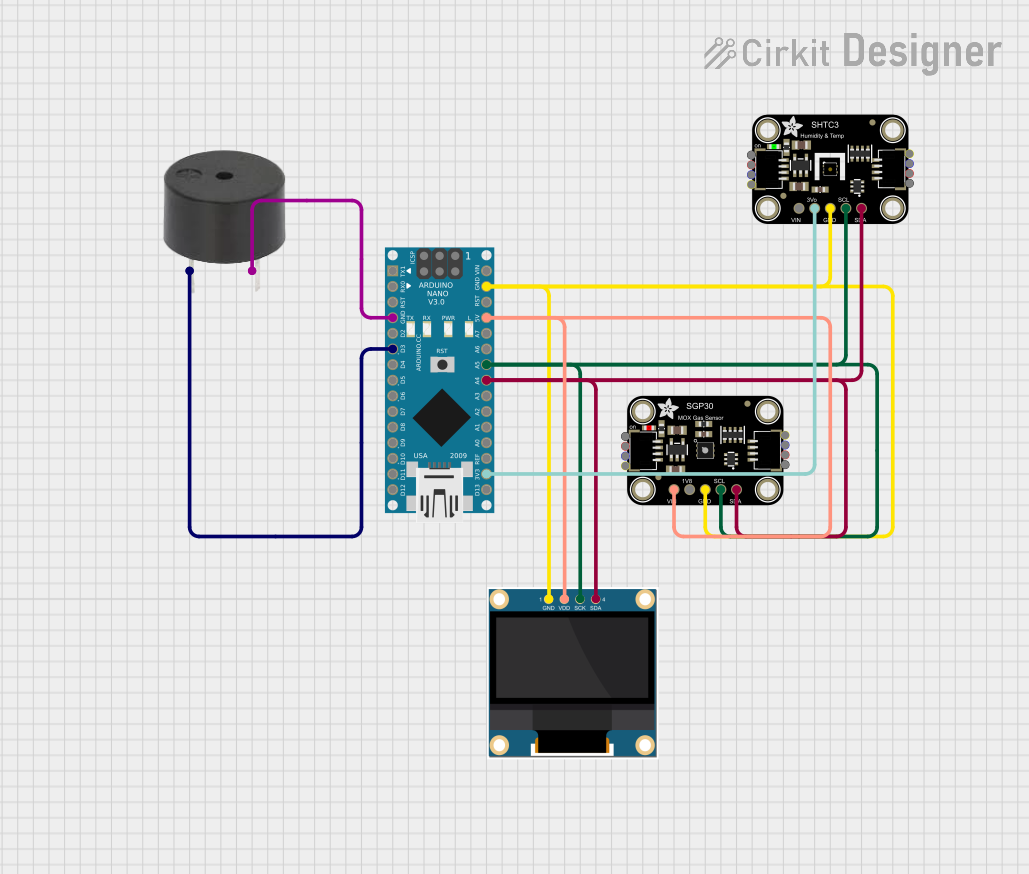
 Open Project in Cirkit Designer
Open Project in Cirkit Designer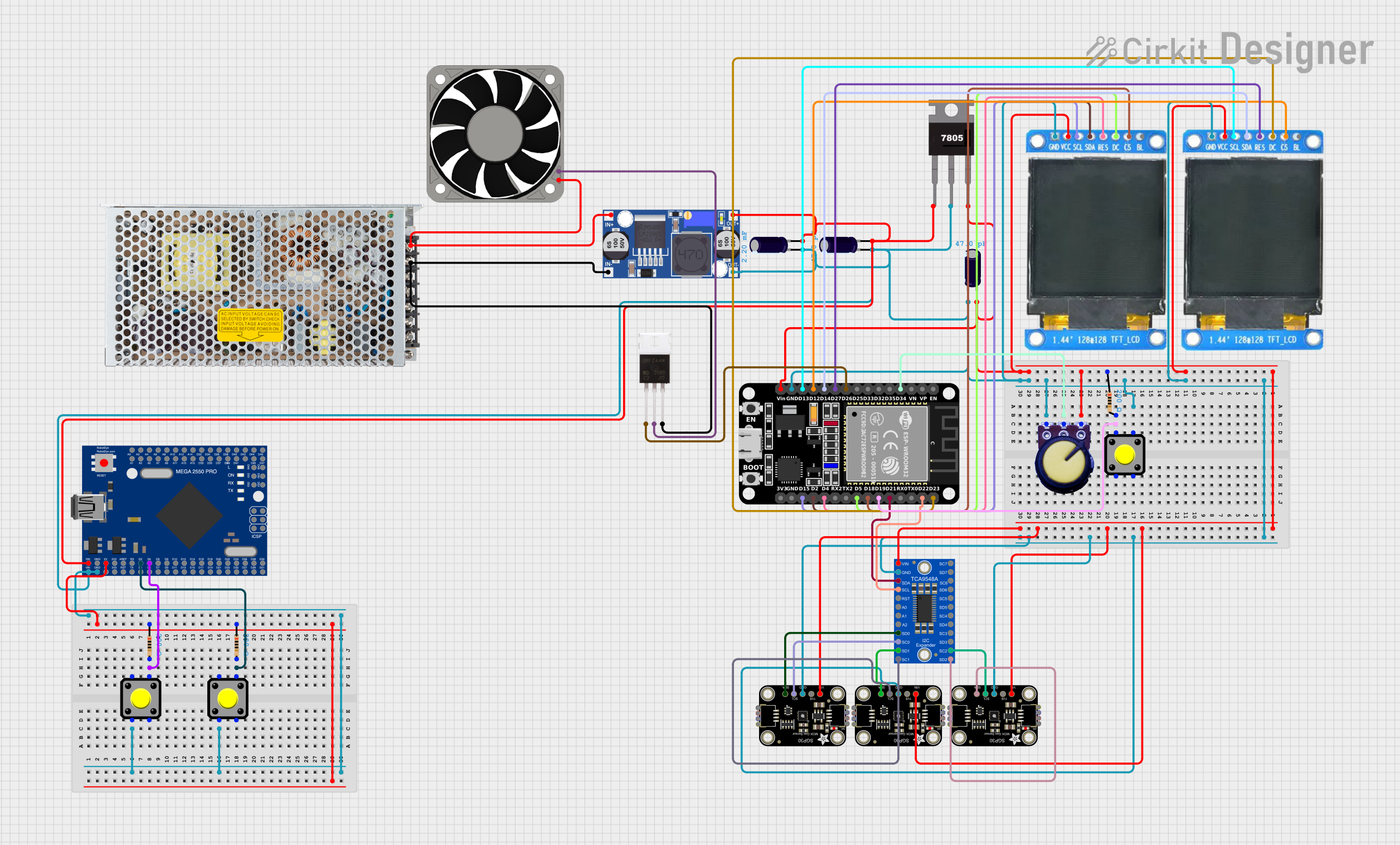
 Open Project in Cirkit Designer
Open Project in Cirkit Designer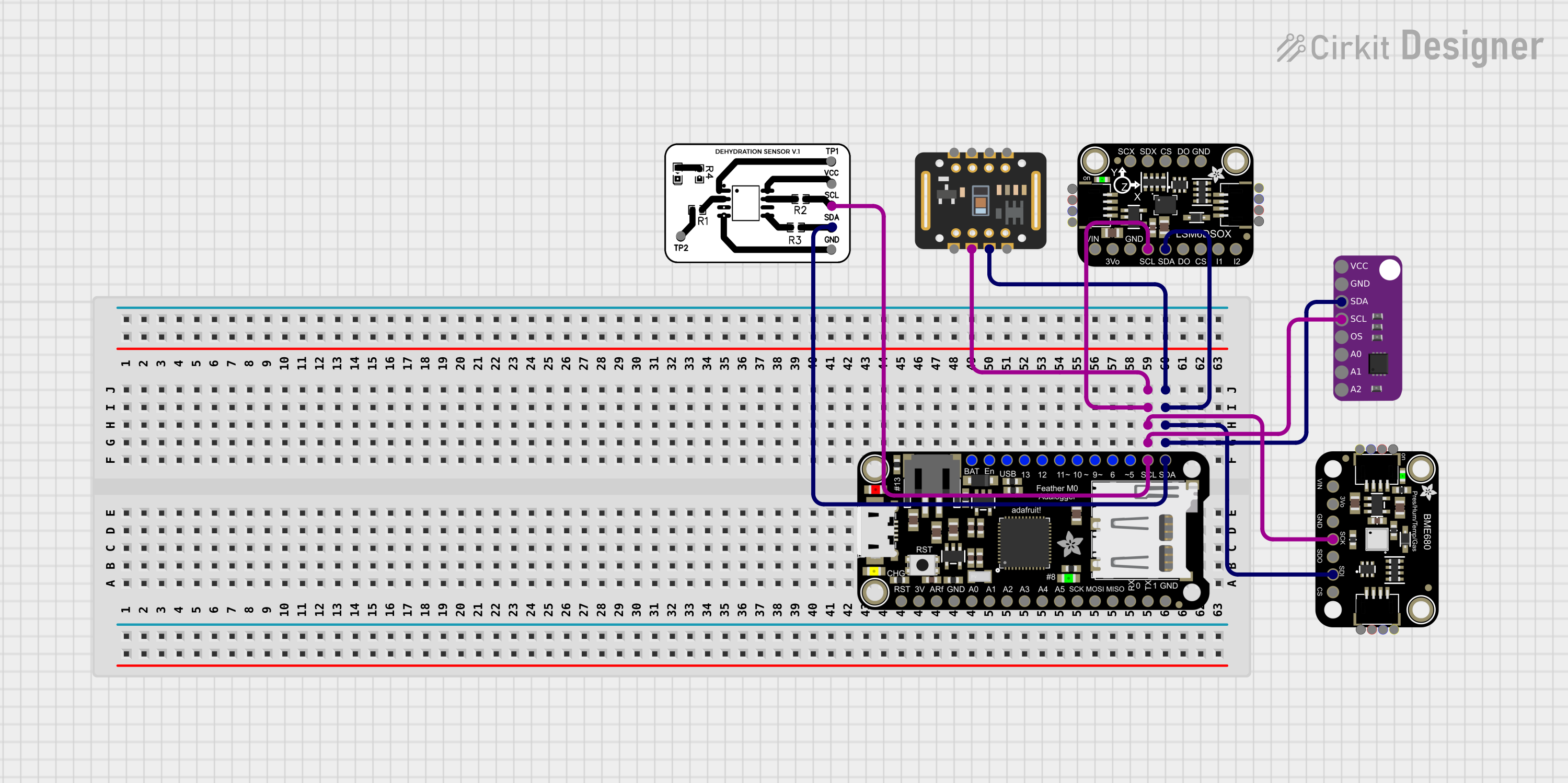
 Open Project in Cirkit Designer
Open Project in Cirkit Designer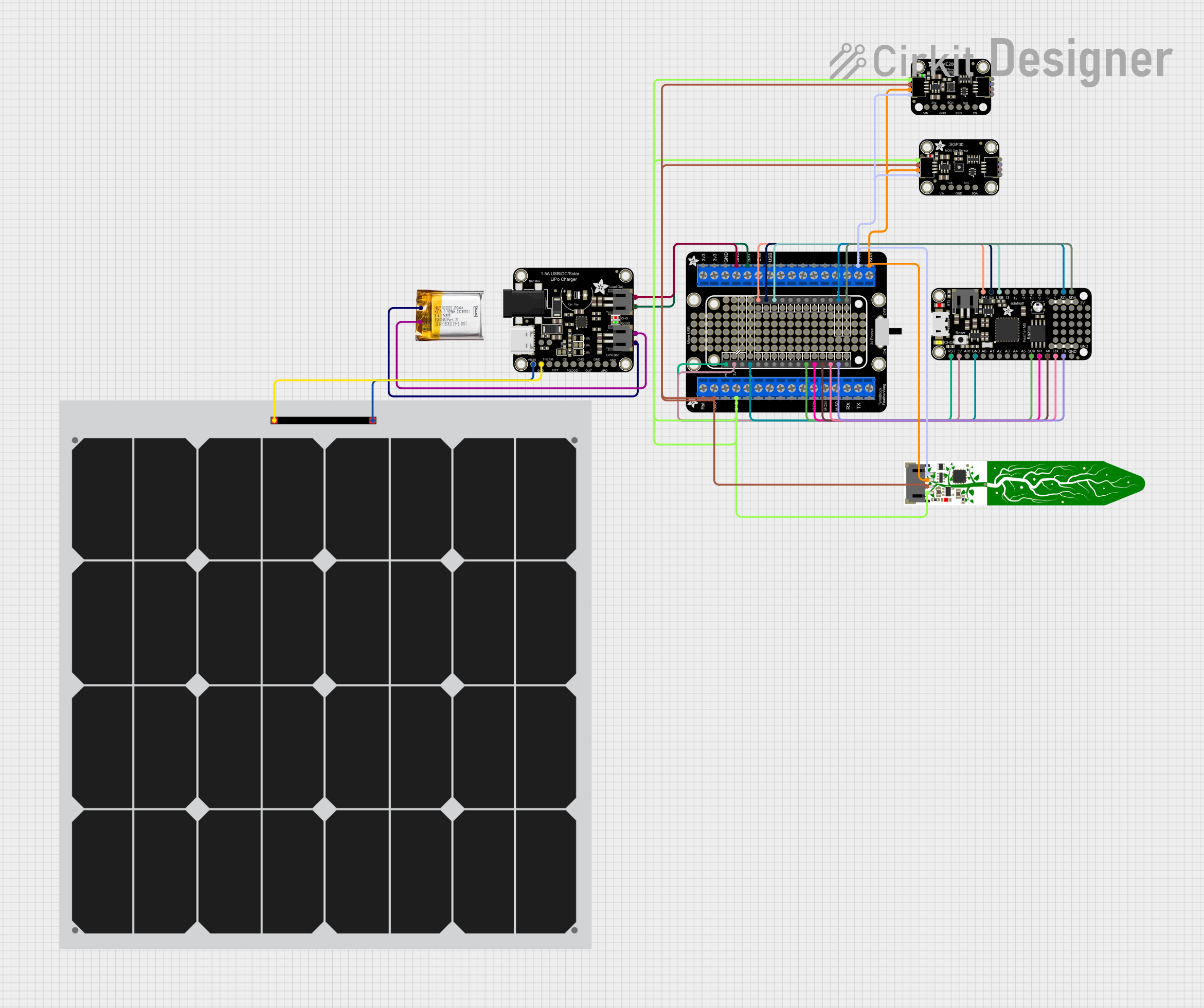
 Open Project in Cirkit Designer
Open Project in Cirkit DesignerExplore Projects Built with Adafruit SCD30

 Open Project in Cirkit Designer
Open Project in Cirkit Designer
 Open Project in Cirkit Designer
Open Project in Cirkit Designer
 Open Project in Cirkit Designer
Open Project in Cirkit Designer
 Open Project in Cirkit Designer
Open Project in Cirkit DesignerTechnical Specifications
Key Technical Details
- Measurement Range (CO2): 400 ppm to 10,000 ppm
- Accuracy (CO2): ±(30 ppm + 3% of reading)
- Measurement Range (Temperature): -40°C to 70°C
- Accuracy (Temperature): ±0.4°C
- Measurement Range (Humidity): 0% to 100% RH
- Accuracy (Humidity): ±2% RH
- Interface: I2C
- Operating Voltage: 3.3V to 5.5V
- Current Consumption: 19 mA (average)
Pin Configuration and Descriptions
| Pin Number | Name | Description |
|---|---|---|
| 1 | VIN | Supply voltage (3.3V to 5.5V) |
| 2 | GND | Ground |
| 3 | SCL | I2C clock |
| 4 | SDA | I2C data |
| 5 | nRDY | Data ready output (active low) |
| 6 | RST | Reset input (active low) |
Usage Instructions
Integration into a Circuit
To use the Adafruit SCD30 with an Arduino UNO, follow these steps:
- Connect the VIN pin to the 5V output on the Arduino.
- Connect the GND pin to one of the GND pins on the Arduino.
- Connect the SCL pin to the A5 pin (SCL) on the Arduino.
- Connect the SDA pin to the A4 pin (SDA) on the Arduino.
Best Practices
- Ensure that the sensor is not exposed to direct sunlight or other sources of heat, as this can affect the measurements.
- Avoid placing the sensor in areas with high concentrations of volatile organic compounds (VOCs) or other gases, as they may interfere with CO2 readings.
- For accurate humidity readings, allow for adequate air circulation around the sensor.
- Use pull-up resistors on the I2C lines if multiple devices are connected to the bus.
Example Arduino Code
#include <Wire.h>
#include "Adafruit_SCD30.h"
Adafruit_SCD30 scd30;
void setup() {
Serial.begin(9600);
// Initialize the SCD30
if (!scd30.begin()) {
Serial.println("Failed to find SCD30 chip");
while (1) { delay(10); }
}
Serial.println("SCD30 Found!");
}
void loop() {
if (scd30.dataReady()) {
if (!scd30.read()) {
Serial.println("Error reading sensor data");
return;
}
Serial.print("CO2: ");
Serial.print(scd30.CO2);
Serial.print(" ppm\tTemperature: ");
Serial.print(scd30.temperature);
Serial.print(" degrees C\tHumidity: ");
Serial.print(scd30.relative_humidity);
Serial.println("%");
}
delay(2000); // Wait for 2 seconds between readings
}
Troubleshooting and FAQs
Common Issues
- Sensor not detected: Ensure that the wiring is correct and that the sensor is properly powered.
- Inaccurate readings: Calibrate the sensor if possible, and make sure it is not affected by external heat sources or direct sunlight.
- I2C communication errors: Check for proper pull-up resistors on the I2C lines and ensure there are no conflicts with other devices on the bus.
FAQs
Q: How often should the sensor be calibrated? A: The sensor comes factory-calibrated, but recalibration is recommended every six months for high-precision applications.
Q: Can the sensor measure CO2 levels outdoors? A: The SCD30 is designed primarily for indoor use. Outdoor measurements may be possible but are subject to environmental factors that could affect accuracy.
Q: Is the sensor waterproof? A: No, the SCD30 is not waterproof and should be protected from moisture and condensation.
For further assistance, consult the manufacturer's datasheet and the Adafruit support forums.